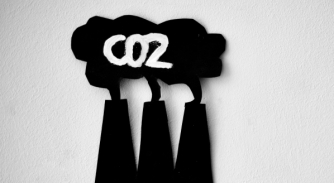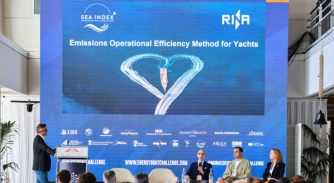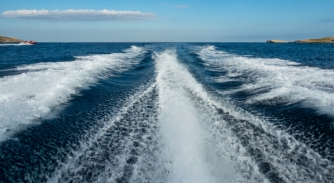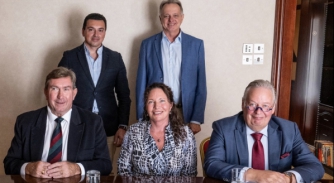Having a seat at the table
Sustainability Editor Megan Hickling reports on the 82nd session of the Marine Environment Protection Committee, held 30 September to 4 October, 2024…

The Marine Environment Protection Committee (MEPC) addresses environmental issues under the International Maritime Organization (IMO)’s remit. Most notably at MEPC 80 in July 2023, the IMO adopted a Strategy on Reduction of GHG Emissions from Ships. The strategy represents a framework for member states, setting the levels of ambition to reduce GHG emissions and other environmental impacts.
These ambitions are specifically to reduce the carbon emissions per transport work by at least 40 per cent across international shipping by 2030. One objective to assist this ambition is to increase the uptake of near-zero GHG emission technologies/fuels/energy sources, aiming for this to represent 10 per cent of the energy used by shipping by 2030.
While some short-term measures, including the Energy Efficiency Existing Ship Index (EEXI) and Carbon Intensity Indicator (CII), have been implemented, different mid-term and long-term measures are also being considered to be included within this framework to achieve their ambition.
Before this latest session, an information paper was submitted from SYBAss GHG Working Group as its role as representative of the global superyacht industry. Lorenzo Pollicardo, technical and environmental director of the Superyacht Builders Association (SYBAss), says this document “could be considered as a ‘step in the door’ in the process of setting a superyacht policy towards GHG emissions by developing an IMO-tailored regulatory instrument.”
This continues an existing collaboration as SYBAss already regularly attends IMO committee and sub-committee meetings related to safety and the environment, alongside participating in associated working and correspondence groups to represent superyacht builders and the wider superyacht industry.
The latest session resolved and agreed different aspects to achieve their overarching strategy. It finalised the designation of two new Emissions Control Areas (ECA) in the Canadian Arctic and Norwegian Seas, coming into effect on 1 March, 2026, and adding to the existing five areas. These ECAs will require NOx Tier III compliance.
In this session the committee identified challenges in the short-term greenhouse gas (GHG) measure CII, which were mainly focused around issues with the methodology not addressing particular elements which could lead to excessive penalisation. It gave examples such as time spent at port, idling or dealing with adverse weather don’t provide sufficient incentive to change operational behaviour or efficient port calls, or allow for fleet averaging, and the potential overlap with mid-term GHG reduction measures. Some of these will be addressed urgently, before January 2026, while others which need further work will be worked on at a later date.
This was an issue addressed in the information letter submitted by SYBAss, which included a revised method for calculating the Carbon Intensity Indicator (CII) and energy efficiency for yachts, joining a similar document from Cruise Lines International Association (CLIA) criticising the methodology for these short-term measures, which will penalise yachts and cruise liners for time spent at port, and not best fitting the very different operating profile of these vessels compared to other cargo vessels. An adjusted version of the CII, the Yacht Zero SCII rating has already been created by Blue ESG. The rating and certificate aligns with the IMO’s CII, is backed by Lloyd’s Register, and has a goal-based approach to carbon emission reduction in yacht operation.
The scope of these measures is likely to increase to include more yachts in the future, so it’s better to have a seat at the table.
Another key aspect of the development of the IMO’s strategy at this session was the progression and refinement of regulatory text on mid-term GHG measures and scheduling of a further Intersessional GHG Working Group in February 2025. The mid-term measure once decided will set out a new framework as part of chapter 5 – regulations on the IMO net-zero framework, as part of MARPOL Annex VI, which is the main international convention covering prevention of pollution of the marine environment by ships from operational or accidental causes.
The new subchapters will be on a goal-based marine fuel standard, called the Greenhouse Gas Fuel Intensity (GFI), regulating the phased reduction of the marine fuel's GHG intensity, and an economic mechanism(s) to incentivise the transition to net-zero. This incentive will be in two parts, either a carbon levy or carbon price leading to payment to be made by ships to pay per tonne of CO2 equivalent emitted, and with a reward for those going beyond the set GFI, which will become more stringent in subsequent years. It is confirmed that this mid-term measure will apply to vessels above 5,000gt, but there are suggestions in the proposed measures for this scope to include vessels from 400gt and above as well.
The need for the intersessional group early next year proves that there is still much discussion and disagreement surrounding the methodology of the pricing mechanism, especially as many fear the potential implications on transport costs and price of goods.
Finally, other agreements were made to amendments under the remit of the committee, such as ballast water record keeping/reporting, NOX technical code and guidance on the ship recycling convention.
Overall, Pollicardo summarises the results of this session as “progresses but also challenges”, noting that while notable progress was made, there is still significant potential for advancements in the IMO’s efforts by strengthening the measures included within the strategy to be able to achieve its set emission-reduction targets in 2030.
Agreements and decisions are still being made as to the specifics of the IMO net-zero framework to achieve the IMO GHG strategy in the upcoming sessions, reviewing and approving the different measures which make up this framework. If all this progresses according to plan, this will culminate in MEPC 88 in the autumn of 2026 where there will be the finalisation of the review of the 2023 IMO GHG Strategy with a view to the adoption of the 2028 IMO Strategy on the reduction of GHG emissions from ships.
Pollicardo also explained that SYBAss aims to ensure that all future MARPOL requirements are developed with consideration for the unique characteristics of superyachts. This is because “it is important to position the yachting industry within the broader maritime community”. He said various forms of added value they have identified from having a proactive approach regarding a yacht GHG policy aligned with the IMO GHG strategy, including the ability to anticipate the GHG IMO provisions for superyachts, set superyacht-tailored regulations at the IMO as well as improve the yachting industry’s public reputation by joining the maritime fight to climate change.
Hopefully, as SYBAss continues to work with IMO we will see more formalised regulatory efforts to include superyachts, progressing the collective effort to reduce our negative impacts. The scope of these measures is likely to increase to include more yachts in the future, and so it’s better to have a seat at the table to make this inclusion the most appropriate for yachts rather than methods being devised that miscalculate a greater impact which yachts would have to pay for.
NEW: Sign up for SuperyachtNewsweek!
Get the latest weekly news, in-depth reports, intelligence, and strategic insights, delivered directly from The Superyacht Group's editors and market analysts.
Stay at the forefront of the superyacht industry with SuperyachtNewsweek
Click here to become part of The Superyacht Group community, and join us in our mission to make this industry accessible to all, and prosperous for the long-term. We are offering access to the superyacht industry’s most comprehensive and longstanding archive of business-critical information, as well as a comprehensive, real-time superyacht fleet database, for just £10 per month, because we are One Industry with One Mission. Sign up here.
Related news

Scope 3 emissions – their challenges and potential solutions
As Scope 3 becomes critical to reporting and disclosure regulations, businesses must understand and manage these emissions to future-proof their business
Business

New CO2 emissions tracking tool
Sea Index® and RINA are collaborating on the next addition to their methodology, focusing on the life-cycle impact of fuels, from conventional to biofuels
Crew
-copy.jpg)
Traditional engines, lower emissions
How a new Stage V marine engine provides significant emissions reductions despite being a typical diesel engine
Technology

Carbon pricing explained
Carbon tax is a way to pay for emissions, but what is its future within the maritime and superyacht sectors?
Crew

Superyacht Alliance established
Founding members MYBA, SYBAss and IAMI, announce the new Superyacht Alliance for Professional Standards qualification
Business
Related news
New CO2 emissions tracking tool
1 year ago
Traditional engines, lower emissions
1 year ago
Carbon pricing explained
1 year ago
Superyacht Alliance established
2 years ago
NEW: Sign up for
SuperyachtNewsweek!
Get the latest weekly news, in-depth reports, intelligence, and strategic insights, delivered directly from The Superyacht Group's editors and market analysts.
Stay at the forefront of the superyacht industry with SuperyachtNewsweek



